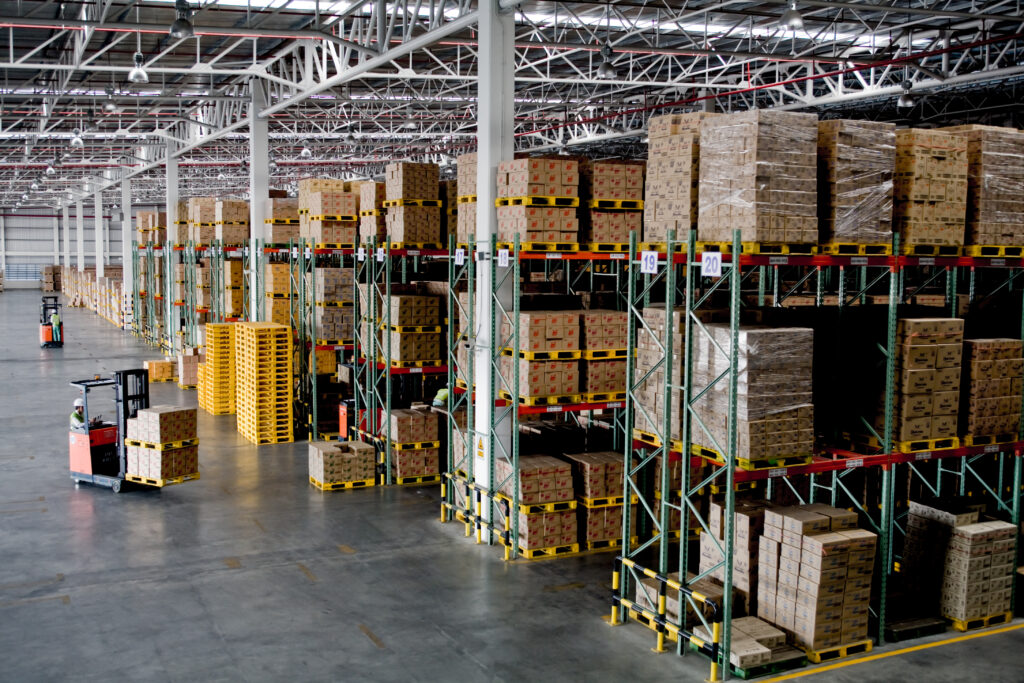Whatever it is, if we want to get more income from our warehouse, we need to manage it using effective tools and equipment. One of the best applications is pallet racks.
What is a pallet rack?
Pallet Racks are storage systems for inventory placed on pallets. Depending on the size and type of warehouse, there are different areas, but ultimately some are normally in all warehouses. For instance, storage area, download area, entry control zone, packaging or repackaging area, quarantine zone, consolidation zone, packing area for the expedition, exit control zone, administrative area, service area, etc. The racking system for pallets is placed in the storage area (zone). This is why choosing the right pallet racks is vital for your business.
Which pallet storage systems exist?
If you can install more pallet racking systems in your warehouse, you will have the opportunity
to attract more clients and therefore generate more revenue. There are some most common pallet racking systems:
- Selective;
- Push Back Racking;
- Double Deep Racking;
- Pallet Live Storage;
- Drive-in Racking;
- Narrow Aisle Racking;
- Mobile Racking;
- Satellite Racking (Deep Lane Pallet Racking);
- Gravity flow racks;
- Shuttle racks.
There are other different modifications to pallet racking systems through the use of a variety of accessories and applications that expand their use. However, let’s take a closer look at which pallet racking systems are right for you.
Selective pallet racks
Notice that one of the most common modes of racking is selective. Their storage utilization is around 90%. Thus for every 100 pallet places available, you can fill 90. Mostly this type of racking system is used when you want free access to any pallet, at any time, and need to pick from pallets at lower levels. When you have a high number of pallets per SKU and you are constrained for space you have to use another mode of racking systems. For instance, Push Back Racking, Double Deep Racking, or Pallet Live Storage. However, each of them has specific features.
Push Back Racking
Use them when you have more pallets per SKU and want to gain greater storage density; utilization is around 60-70%. They can be seven pallets deep, but commonly only two pallets deep. Notice that you can use them for full pallet storage only. Pallets are loaded into the systems at a single point and are typically handled with a forklift or other similar equipment. This is why push-back racks work with the LIFO system (last in, last out). But if your business processes mean frequent access to picking, this type is not suitable for you.
Double Deep Pallet Racking
This is the best compromise between a selective and high-density pallet racking system. Operating with Double Deep Pallet Racking, you will require special forklifts to reach the second pallet location. Generally used for placing two pallets of the same SKU in each double deep slot; storage utilization is 85-90%.
Drive-in Racking
This racking system maintains FIFO and LIFO inventory management systems. You can use it when you do not need to mix SKUs within each bay/lane of drive-in racking. It can be up to 10 or 12 pallets deep and up to 6 or 7 pallets high, their utilization is 70-80%.
Narrow Aisle Racking
You can use them when wanting the best space utilization and have large amounts of goods moving, and out. Tier utilization is high, around 90% of the footprint. This is why, you should use special equipment such as forklifts with rotation forks. Notice, that only one machine in an aisle at a time.
Mobile Racking
A very high-density pallet rack storage system thanks to them, you can modify your storage area as you wish. You get access to pallets in the system when the racks are separated. Mobile bases with wheels support selective racking. When your business has a low season, and you do not require access to each pallet, you can draw together the racks and get a compact storage area. By the way, you can utilize them in cold storage facilities also. The utilization is 80 – 90%.
Gravity flow racks
If you’re looking for a pallet racking system that requires only one forklift, you’ve got it. A gravity flow racking system gives you up to 85% storage utilization. Here, loads are moved into the depth of the channel without manual work. Why? Because the gravity racks have an angle of 4 degrees. You can easily load and unload pallets into the racks.
Shuttle racks
This is a great example of automated storage equipment. You will use the special electrical unit, called a shuttle, to load the pallets inside racks. This racking system gives a gain in working time because while the loaded pallet moves into the bay by itself, the operator can move on to the next pallet. Shuttle racks give you up to 80% of storage utilization.
This is a brief overview of the various pallet racking systems. You can find more on our website, or just give us a call.
